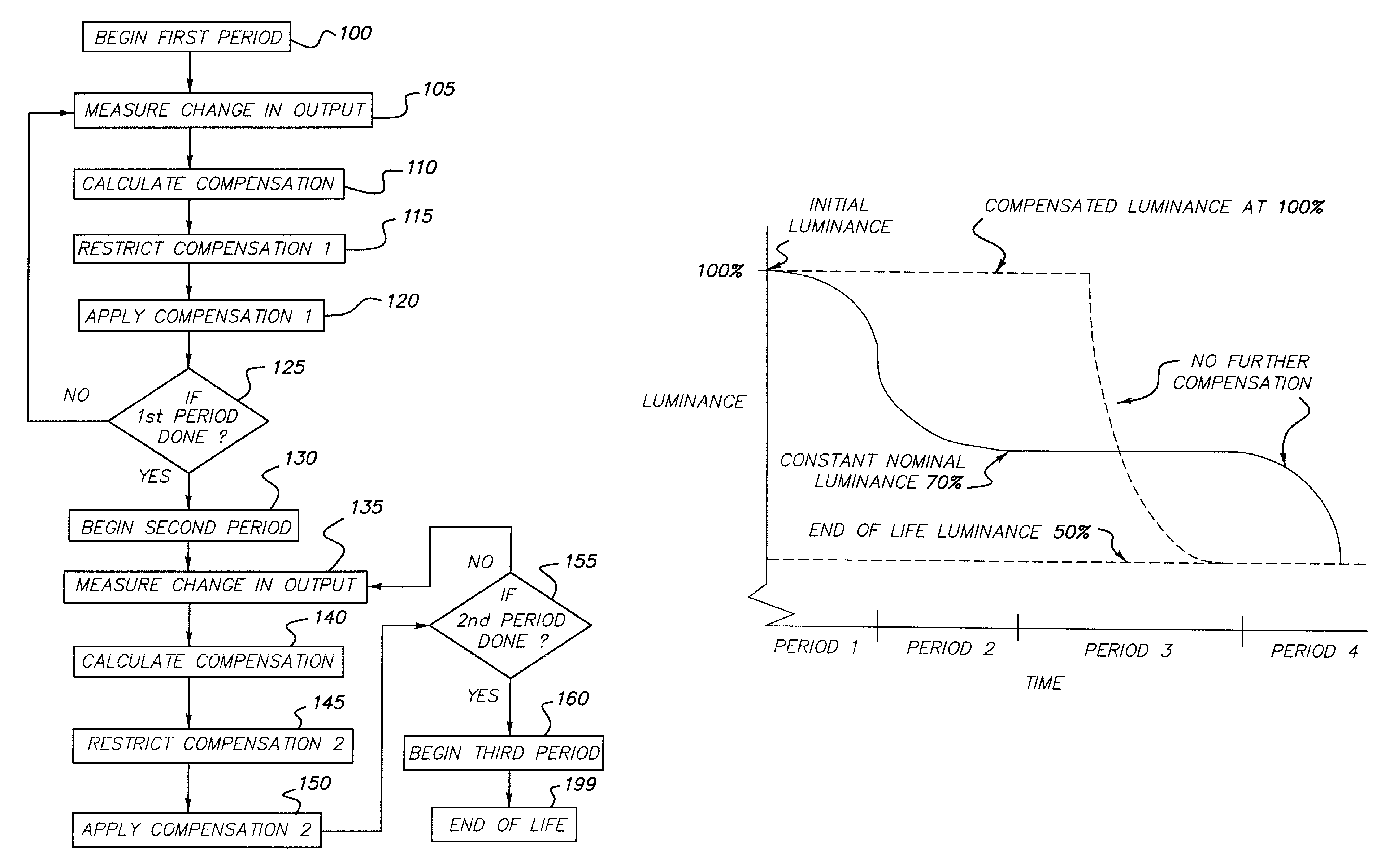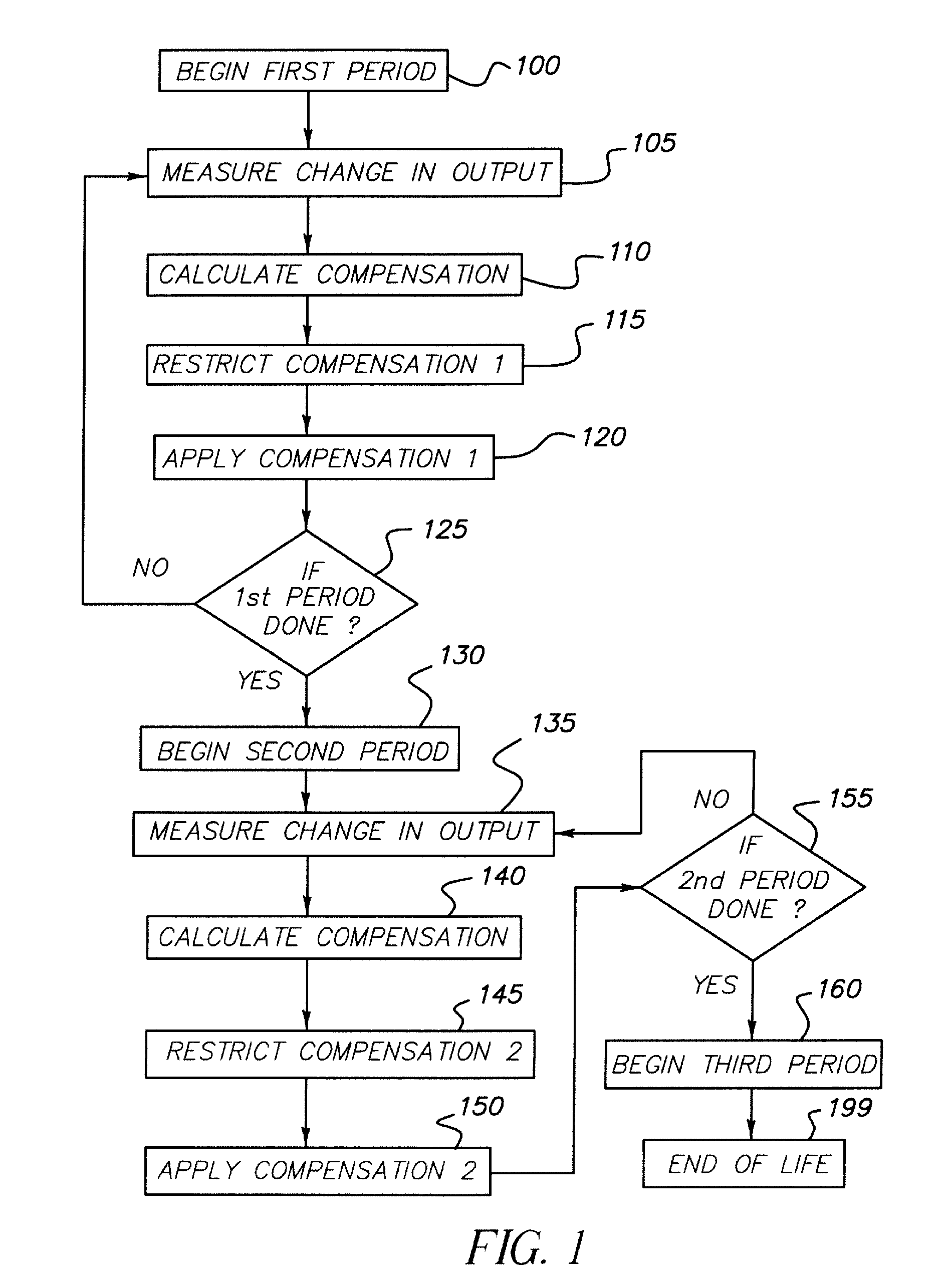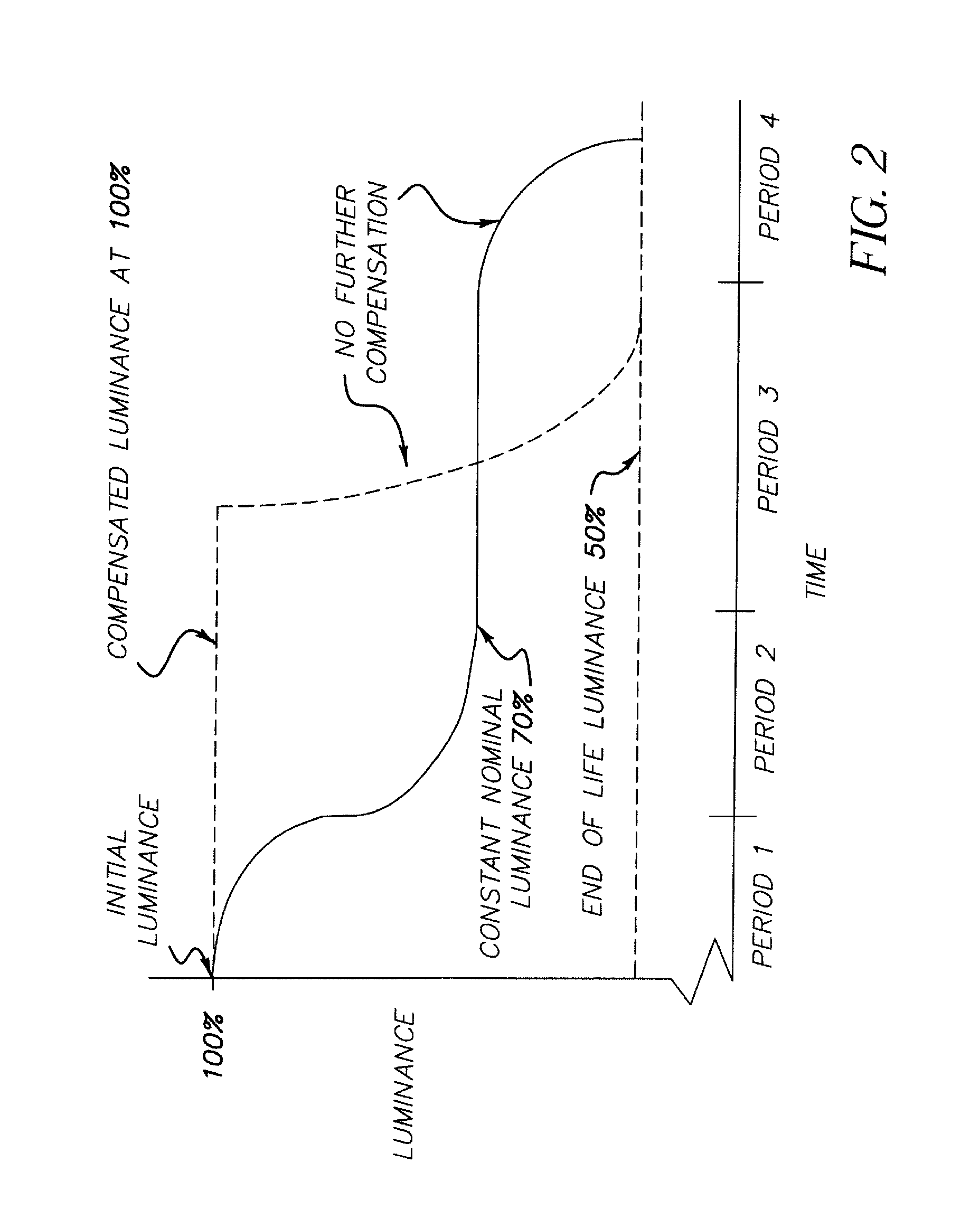LED device compensation method
a technology of led devices and compensation methods, which is applied in the direction of static indicating devices, instruments, semiconductor lamp usage, etc., can solve the problems of less efficient light emission, reduced display lifetime, and degradation of materials in light-emitting elements, so as to improve performance, limited display luminance, power use, and lifetime
- Summary
- Abstract
- Description
- Claims
- Application Information
AI Technical Summary
Benefits of technology
Problems solved by technology
Method used
Image
Examples
Embodiment Construction
[0027]Referring to FIG. 1, according to one embodiment of the present invention, a method for controlling and compensating aging in an LED device comprises the steps of initializing 100 a first period, and measuring 105 the change in display output to calculate 110 a compensation signal. By employing a first algorithm to determine the desired compensation, the compensation may be restricted 115 to a first compensation during the first period and applied 120 to the LED device during the first period to effect a first compensation in the display output. The first period status may be tested 125 to determine whether to continue with the first period restriction by comparing the LED device performance to a first criterion. If it is determined to continue with the first period restriction, the process of measurement 105, compensation calculation 110, restricting 115 the compensation, and applying 120 the compensation is repeated. If not, a second period is begun 130. In this second perio...
PUM
 Login to View More
Login to View More Abstract
Description
Claims
Application Information
 Login to View More
Login to View More - R&D
- Intellectual Property
- Life Sciences
- Materials
- Tech Scout
- Unparalleled Data Quality
- Higher Quality Content
- 60% Fewer Hallucinations
Browse by: Latest US Patents, China's latest patents, Technical Efficacy Thesaurus, Application Domain, Technology Topic, Popular Technical Reports.
© 2025 PatSnap. All rights reserved.Legal|Privacy policy|Modern Slavery Act Transparency Statement|Sitemap|About US| Contact US: help@patsnap.com



